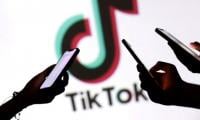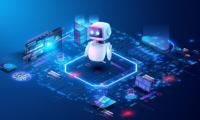At first, there was Web 1.0, which was upgraded to Web 2.0, and now Web 3.0 is here with us. At first, Web 1.0 was basically about creating static websites before the emergence of dynamic web pages.
The websites made at that time were simple and often unresponsive. Web 2.0 came with some transformation, and there were more web interactions and the emergence of social media networks.
There was also user-generated content, and users had control of the content they got. The increase in internet access through smartphones also played a huge role in the growth of Web 2.0. The websites became more responsive as more apps came to be, including social media sites like Instagram, video media sites like YouTube, service apps like Uber, etc.
Through digitization, both businesses and people have benefitted. People can use social networks to market their products and reach the right audience. Freelancing has also grown diversely, allowing people to hire a freelancer to design their apps or websites, or other tasks. Ideally, you can source a lot of help from the global world through the internet.
Web 2.0 led to the growth of the internet and more interactions. Influencer marketing has also grown in which influencers market products for clients; the influencers’ followers may be among potential customers.
The emergence of Web 3.0 will play a huge role in the continuation of connectivity. Web 3.0, an upgrade of Web 2.0, is the future and the next generation. Instead of having a centralized perspective like Web 2.0, it will have a decentralized type of impact. Additionally, Web 3.0 will play a major role in our lives based on its features.
Web 3.0 will allow a direct connection; a person will not need authorization when they want to make a bank transaction. Artificial intelligence and machine learning are major concepts in Web 3.0. A single profile can be used on different devices. This works like our phone’s synchronization or Google accounts synchronization that allows people to get their data on their laptops from their phones. This is without the need for transferring data, but by just signing into the account.
Web 3.0 will also play a huge role in ensuring that internet connectivity is dominant in all regions of the world. Therefore, people can access the internet from their computers or mobile devices. The growth of the ‘Internet of things’ (IoT) will help in the synchronization of devices. For example, someone can confirm whether the main door is locked using a smart lock from the comfort of the kitchen – this also goes for other smart devices.
The main role of Web 3.0 is to ensure internet decentralization. Our searches on the internet are not private. Therefore, there will be a peer-to-peer network that doesn’t allow a third party to monitor someone. This will heavily rely on blockchain technology, cryptocurrencies, and decentralization.
Additionally, Web 3.0 entails edge computing in which there is the processing, analysis, and storing of data close to where it is generated. A decentralized data network will reduce the selling and trading of data through losing ownership, risking privacy and relying on intermediaries. This will reduce how tech giants track and monitor user searches to customize advertisements they show on a person’s timeline. Web 3.0 also aims to make internet searching, faster, easier, more efficient and more transparent.
The Metaverse will also play a role in Web 3.0. This is due to shared virtual world environments and will impact the agricultural, architecture, engineering, law and order, service industry, transportation, education, architecture, and health care sectors. This is through the use of augmented reality and virtual reality in the Metaverse.
Currently, people interact through messages and social media. Through the Metaverse, people will be able to interact through avatars, messages, sounds, video games and much more. People will have 3D experiences on the internet through the digital environment.
Web 3.0 will provide a platform for the youth to get empowered in the digital world, allowing them to know all the crucial information about the virtual world, Web 3.0, and Metaverse. Colleges and universities should teach about the future of the digital world to students. This will lead to more empowered students who can easily create employment opportunities for themselves through the available resources. Through practical education, it will be easier for young people to understand different concepts; they can then brainstorm ideas and implement them.
Various Web 3.0 technologies like blockchain technology, cryptocurrency, semantic web, artificial intelligence, machine learning, Metaverse, 3D graphics, decentralized autonomous organizations, edge computing, smart contracts, and decentralized apps will continue to grow in the next 10 years. This will lead to more employment opportunities, privacy of personal data, easy communication, remote work, easy illustration of infrastructural projects, better education and an advanced healthcare system.
The emerging digital potential can lead to over $100 billion for technology talent in the next 20 years in Pakistan. If the talent base has the capabilities to realize the benefits, it could easily lead to big foreign exchange earnings and better internet business within the country.
Pakistan has a great youth bulge of digitally connected citizens. It also has a large freelancing potential and an emerging startup ecosystem. This can lead to a lot of growth in the country in the coming years as Web 3.0 is adapted. Web 3.0 is the future of the internet.
The writer is CTO & director, Centre of Information Technology at IoBM. He tweets @imranbatada and can be reached at: Imran.batada@gmail.com















